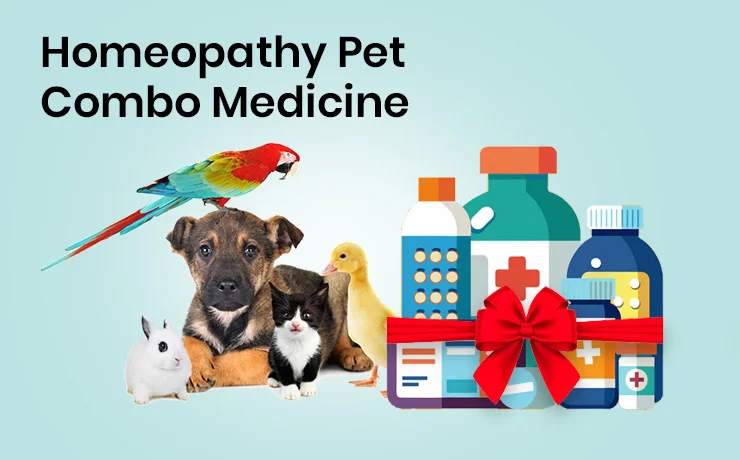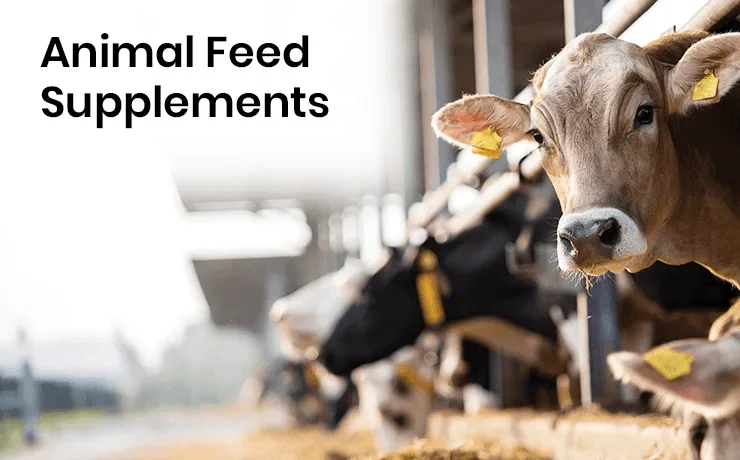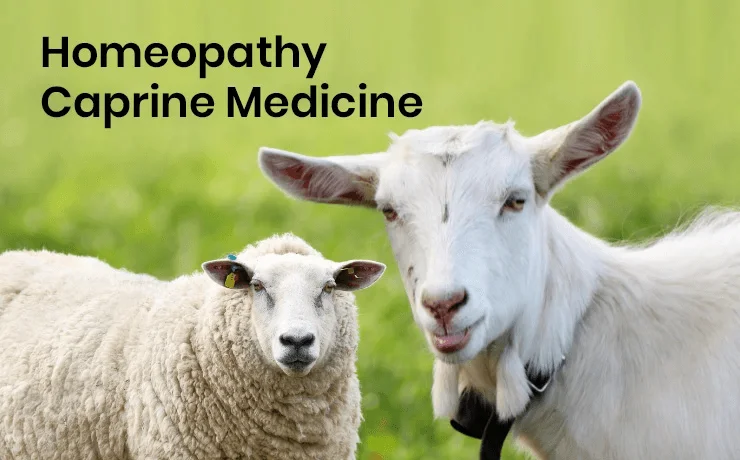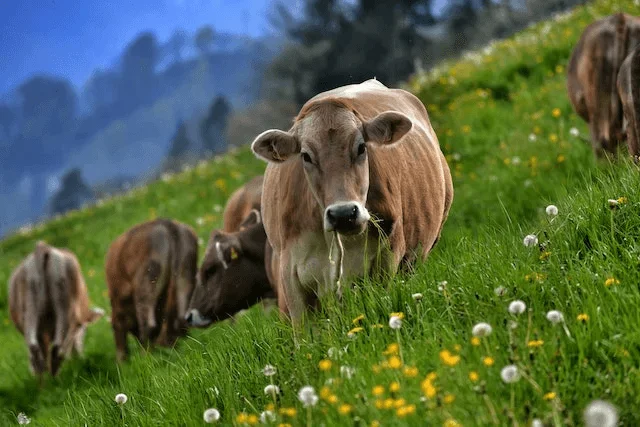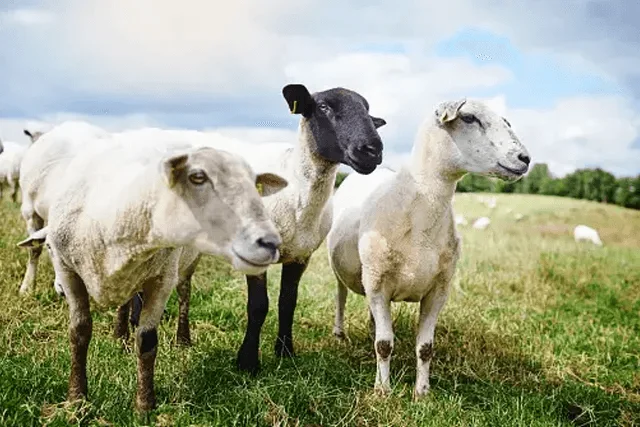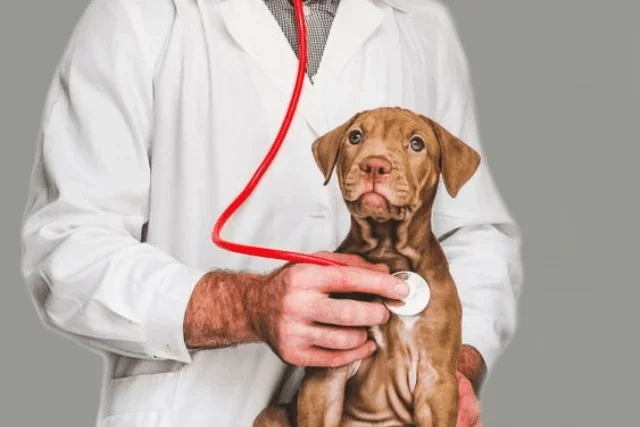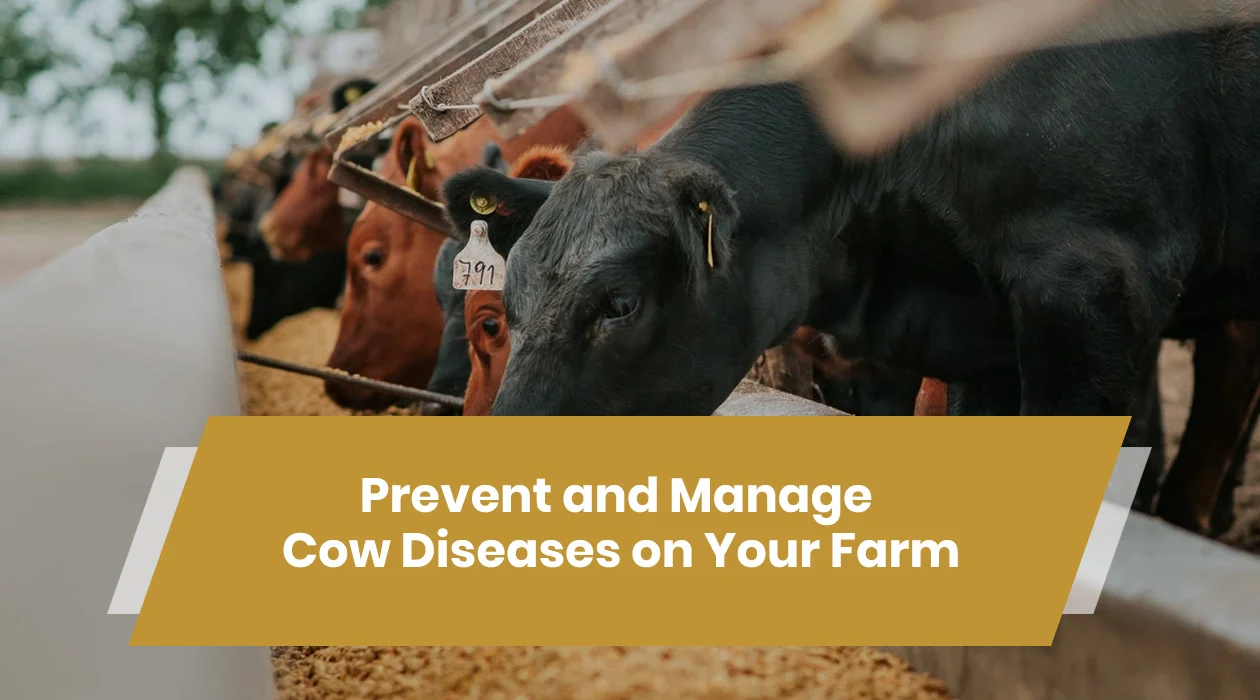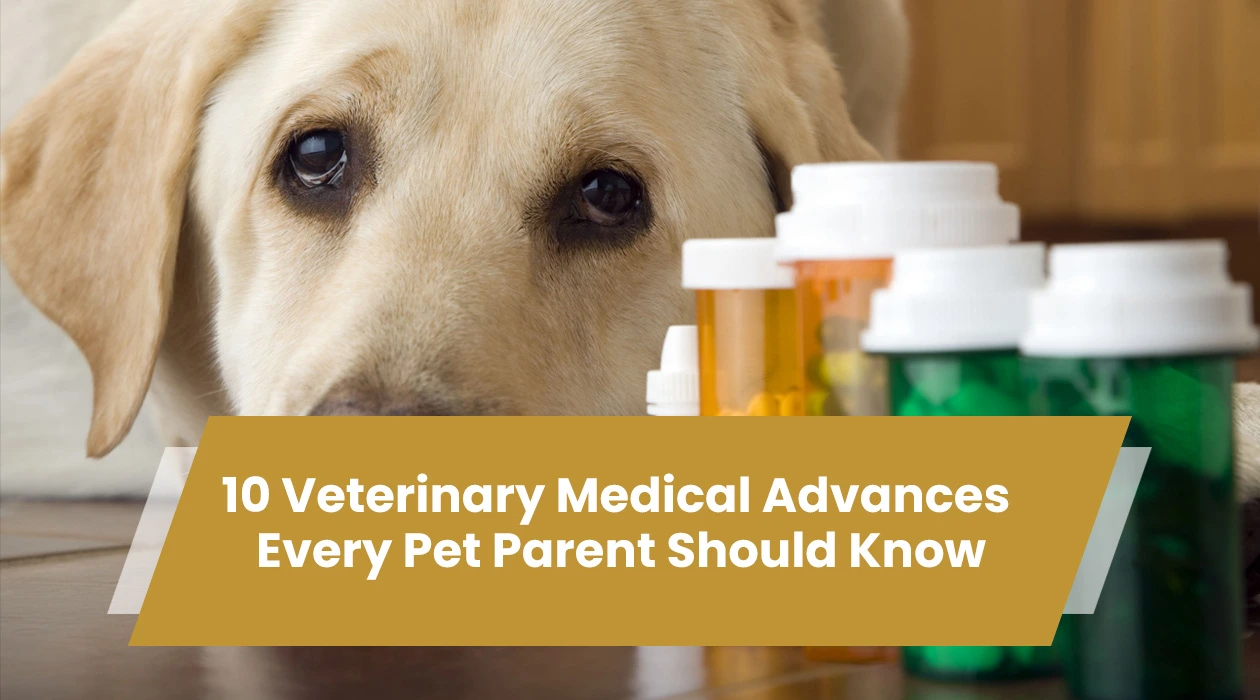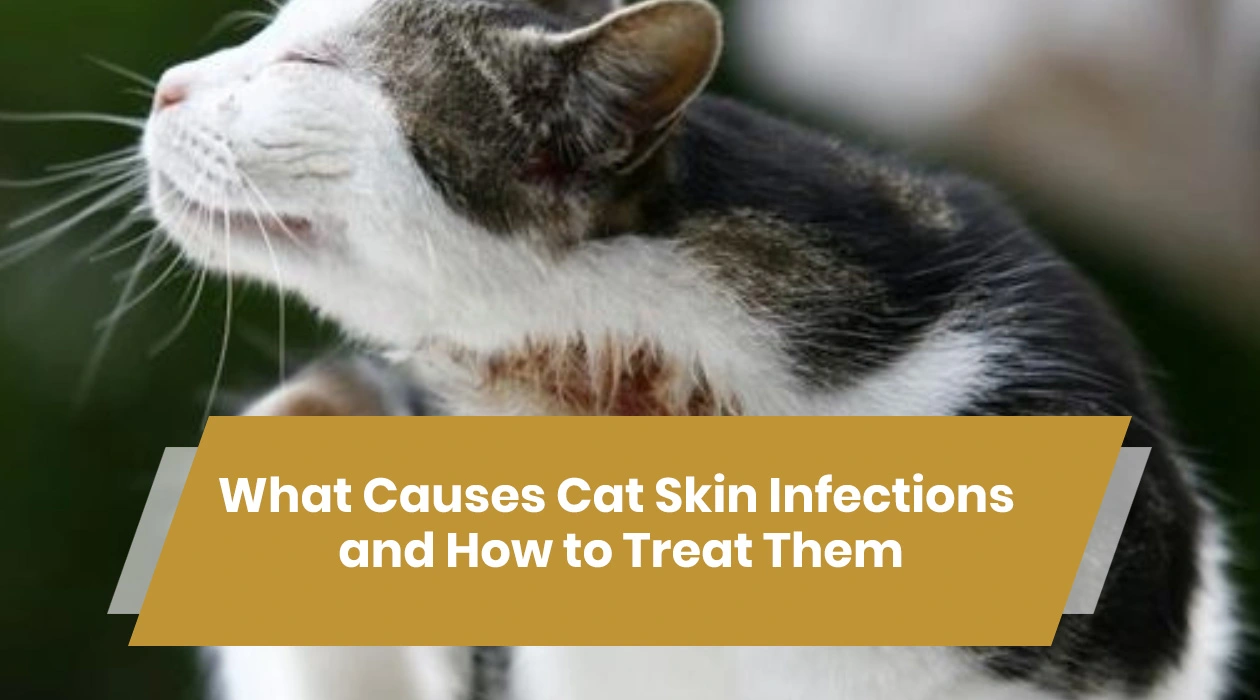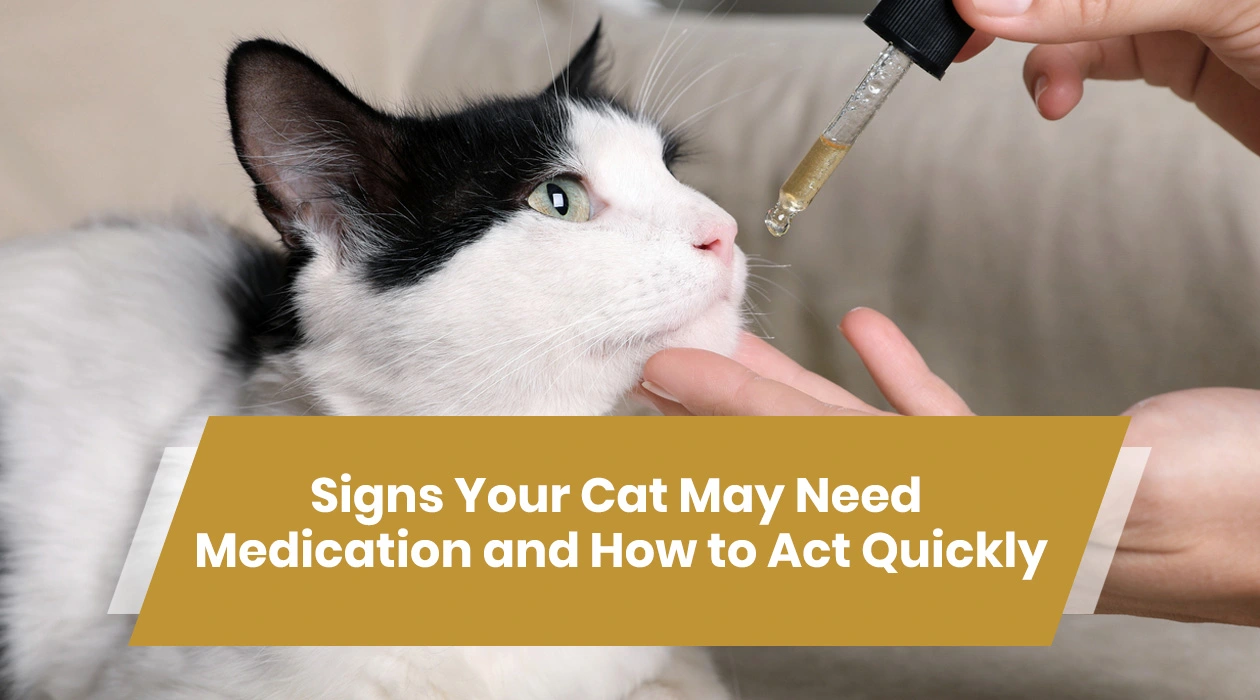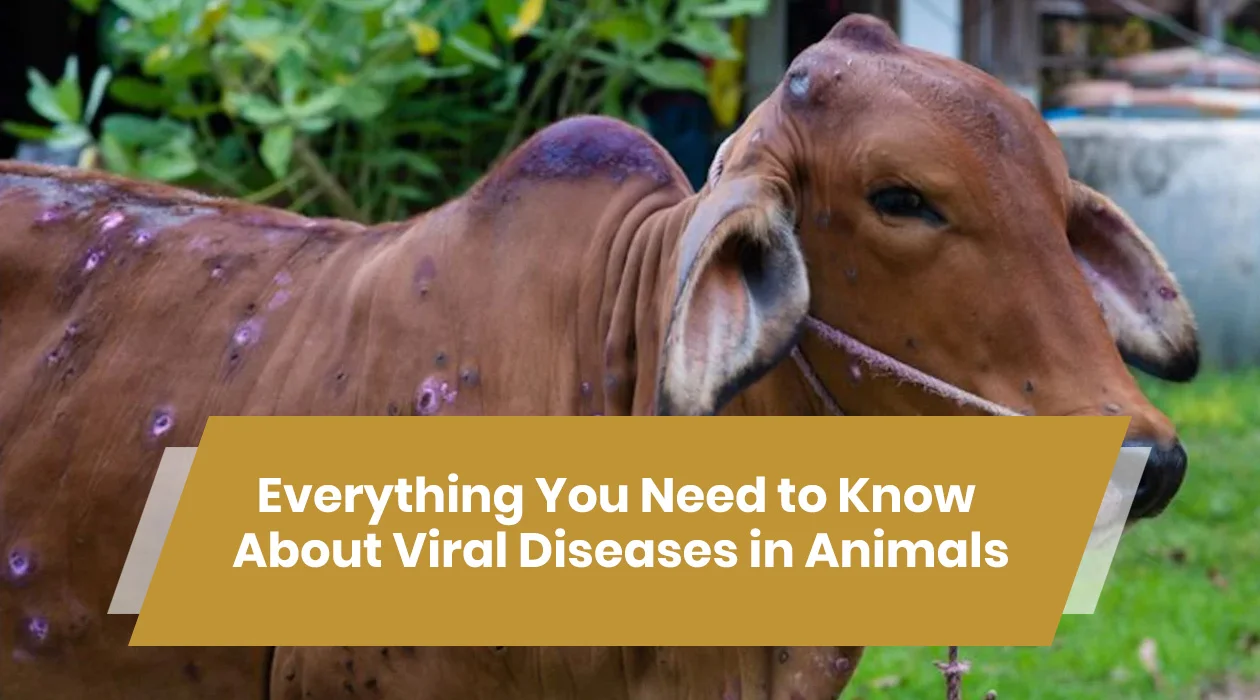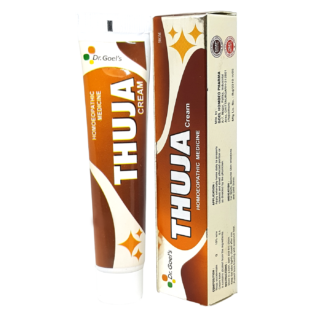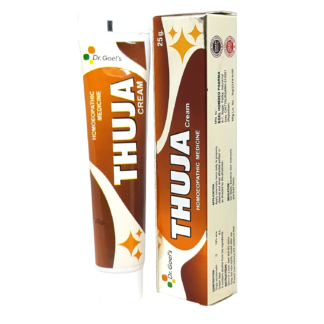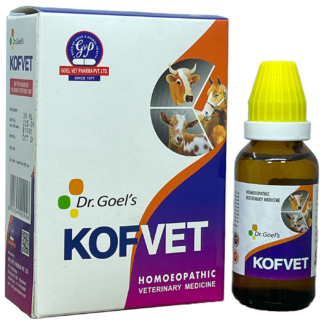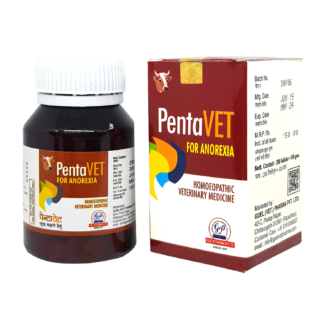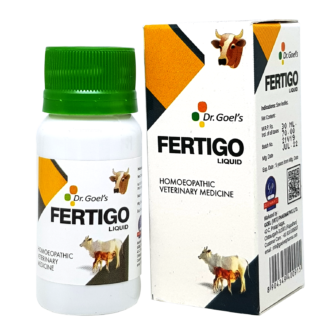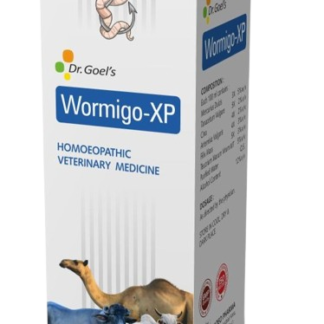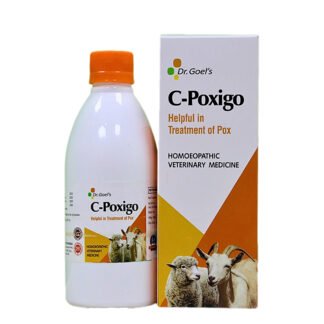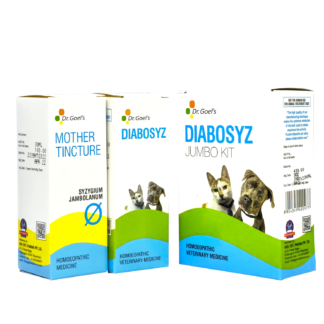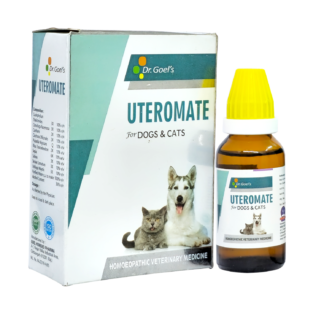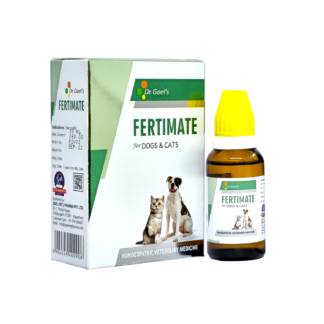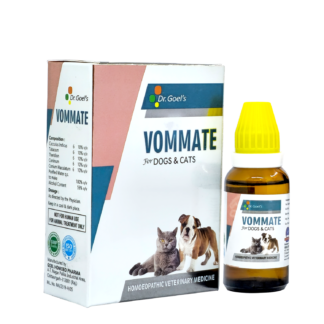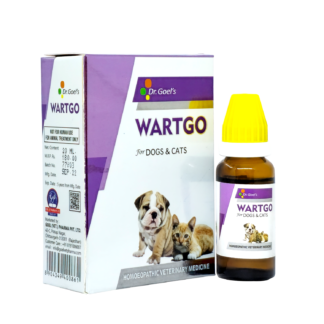Beef or dairy farming is about achieving maximum production and caring for and managing your cows. On a similar note, proper health care or control of cow diseases, narrowing down to individual animals, is essential for optimum productivity and the long life span of the herd. This blog will help you learn how to prevent and manage cow diseases, such as bovine viral diarrhea, bovine mastitis, bovine milk fever, and skin diseases in cows.
Understanding Common Cow Diseases
Since every animal in a cow is different, various diseases can disrupt your farm productivity in numerous ways, either through reduced milk production or health complications. To avoid falling prey to these diseases, understanding them is an informed practice so that you don’t get caught off guard.
- Bovine Viral Diarrhea (BVD): Bovine viral diarrhea is a major disease in many herds, mainly manifested in fever, diarrhea, and respiratory disorders. BVD has several complications that may result from the condition if not treated early.
- Bovine Mastitis: This inflammation of the mammary glands requires effective treatment. Mastitis decreases milk production and quality and may, in extreme situations, cause inveterate infections.
- Bovine Milk Fever: Hypocalcemia affects cows when the calcium level reduces after calving but before the normal estrous cycle resumes. It may be chronic and cause the affected person to be incapacitated; it needs treatment administered as soon as possible to avoid the worst outcomes.
- Bovine Skin Diseases: Lesions of bovines cover all frustrating skin and coat diseases of the animals. These include sicknesses, mites, worms, and other skin-related complaints ranging from being uncomfortable for the cow to being fatal.
Preventing Cow Diseases
Suitable prevention processes are necessary to effectively prevent cow diseases and ensure the health of many cows on a ranch. Implementing the following measures can significantly reduce the risk of disease outbreaks:
- Vaccination Programs: Adhering to a proper vaccination calendar is very important so that diseases known to be devastating, like bovine viral diarrhea, can be prevented. It is effective to give your herd timely vaccinations so that they would not be able to get sick frequently.
- Good Hygiene Practices: Carefully clean your barn, feeding areas, and milking utensils to avoid contracting bovine mastitis or other infections. Maintain these areas frequently to reduce the possibility of getting infected with diseases.
- Proper Nutrition: Ensuring that balanced and nutritious feed is provided could assist in the prevention of bovine milk fever and other nutritional disorders. Ensure the cows are supplied with vitamins and minerals, especially in the calving preparation stage.
- Regular Health Checks: You should schedule regular health checkups to prevent severe health concerns. These routine checks will ensure that there are no early indications of bovine viral diarrhea and other conditions.
- Environmental Management: One important requirement is preventing the cows’ living environment from having too much moisture or contamination with pathogens, which can cause skin diseases or ailments. It is very important that barns and pastures, especially the ones you use to house your animals, have good air circulation and the right drainage facilities.
Managing Cow Diseases
It, therefore, becomes paramount that any disease, as soon as it is identified or noticed, is controlled and treated as early as possible to cause little or no harm to the animal’s reproductive system or productivity on the farm. Here’s how to address some of the most common cow diseases:
- Managing Bovine Viral Diarrhea: If you observe any signs that suggest the existence of bovine viral diarrhea in your herd, seek the services of a veterinarian so that you can properly diagnose and treat the problem. A vaccine and tight biosecurity measures are vital in preventing and containing the disease in known infected premises. Quarantine infected animals and observe a high standard of hygienic measures to minimize the spread of the virus among the animals.
- Bovine Mastitis Treatment: To treat bovine mastitis, you must use antibiotics, which your vet can only give. Aside from medical management, enhance milking sanitation; it may also be useful to try using teat detergents to minimize reinfection. Maintain a constant check and count of new mastitis cases so that the incidence can be well managed in spike cases.
- Treating Bovine Milk Fever: Bovine milk fever should be treated immediately with calcium supplements. Calcium should be given intravenously or orally, depending on the severity of the condition. The first line of therapy should be coordinated with the veterinarian to prevent the further development of the clinical signs and implement the necessary changes during the dry period.
- Addressing Bovine Skin Diseases: Bovine skin diseases come with different treatments depending on the type of skin disease identified in the cattle’s skin. Bacterial skin disease might need antibiotics, while in parasitic skin diseases, he or she may need anti-parasitic drugs. Caring for your skin externally means washing and avoiding environmental factors that may lead to skin problems.
Additional Tips for Cow Disease Prevention and Management
- Implement a Record-Keeping System: Maintain records of immunizations, medications, and health care observations. This data can be used to monitor disease prevalence and assess the successes or failures of your managerial strategies.
- Educate Your Team: Ensure that all the people working for your farm, whether they are employed directly or indirectly, are aware of the obvious symptoms of diseases that may affect your cows and the need to take necessary precautions against them. Training sessions should be conducted occasionally to ensure that high standards of animal care are maintained.
- Monitor and Adjust: Monitor and adjust your practices according to the state of health in your herd. Continuous evaluations are recommended to gauge new concerns that may have risen and enhance disease prevention.
Effective Biosecurity Measures to Prevent Cow Diseases
Ensuring that no diseases infect the cows on the farms and maintaining the general health of the cows is a crucial aspect that needs to be implemented in managing biosecurity. Strengthening biosecurity measures will determine effective precautions for infectious diseases of the cows, such as bovine viral diarrhea, bovine mastitis, bovine milk fever, and bovine skin diseases. Here are the detailed measures that could help you minimize the risk to your animals and general farm productivity to bio-security threats.
- Control Access to Your Farm: Minimize people coming to your farm and allow only those critical to the farm’s operations to be allowed in. Adopt the visitors’ standards and make everyone who gets into the farm adhere to cleanliness standards; for instance, wear new clothes and have shoes or boots fumigated. This minimizes the chances of bringing in pathogens outside the livestock production cycle.
- Quarantine New Animals: New animals or those that have come back to the barn from somewhere should always be kept in isolation for 2-3 weeks before they are introduced to the rest of the animals. This also aids in detecting diseases, including bovine viral diarrhea or bovine mastitis, so that they can be separated from the rest of the group.
- Maintain Cleanliness and Sanitation: All equipment, feeders, and the house should be cleaned and disinfected regularly. Clean with certified pathogen killers and follow the manufacturer’s instructions to kill pathogens. Sanitizing practices are pivotal, considering the nature of diseases affecting bovine skin and other infections.
- Implement a Pest Management Program: Mitigate pests and vectors, such as flies, rats, and others, that help pass diseases in the community. Adopt proper pest control and handle the movement of wastes and manure so as not to attract pests.
- Vaccination and Health Monitoring: Establish a comprehensive vaccination schedule for your herd to protect against common bovine diseases, including bovine viral diarrhea and bovine mastitis. Regular health monitoring and record-keeping are also crucial for early detection and management of emerging issues.
Integrating these biosecurity measures into your farm management practices can significantly reduce the risk of disease outbreaks and maintain a healthier, more productive herd.
Conclusion
Preventing and managing cow diseases is critical to maintaining a healthy and productive herd. By understanding the common diseases affecting cows, implementing effective prevention strategies, and managing outbreaks promptly, you can safeguard your animals’ well-being and ensure your farm’s success. Regular health checks, proper nutrition, good hygiene, and effective treatment protocols are essential to a successful disease management plan. Stay proactive, stay informed, and your herd will thrive.

 Australian Shepherd
Australian Shepherd Beagle
Beagle Belgium Shepherd
Belgium Shepherd Bernese Mountain Dog
Bernese Mountain Dog Border Collie
Border Collie Boxer
Boxer Bulldog
Bulldog Cavalier King Charles Spaniel
Cavalier King Charles Spaniel Chihuahua
Chihuahua Cocker Spaniel
Cocker Spaniel Dachshund
Dachshund Doberman Pinscher
Doberman Pinscher Dogo Argentino
Dogo Argentino French Bulldog
French Bulldog German Shepherd
German Shepherd Golden Retriever
Golden Retriever Great Dane
Great Dane Himalayan Shepherd
Himalayan Shepherd Indie Dogs
Indie Dogs Labrador Retriever
Labrador Retriever Pakistani Bully
Pakistani Bully Pembroke Welsh Corgi
Pembroke Welsh Corgi Pitbull
Pitbull Pomeranian
Pomeranian Poodle
Poodle Pug
Pug Rottweiler
Rottweiler Shih Tzu
Shih Tzu Siberian Husky
Siberian Husky Yorkshire Terrier
Yorkshire Terrier Australian Shepherd
Australian Shepherd Beagle
Beagle Belgium Shepherd
Belgium Shepherd Bernese Mountain Dog
Bernese Mountain Dog Border Collie
Border Collie Boxer
Boxer Bulldog
Bulldog Cavalier King Charles Spaniel
Cavalier King Charles Spaniel Chihuahua
Chihuahua Cocker Spaniel
Cocker Spaniel Dachshund
Dachshund Doberman Pinscher
Doberman Pinscher Dogo Argentino
Dogo Argentino French Bulldog
French Bulldog German Shepherd
German Shepherd Golden Retriever
Golden Retriever Great Dane
Great Dane Himalayan Shepherd
Himalayan Shepherd Indie Dogs
Indie Dogs Labrador Retriever
Labrador Retriever Pakistani Bully
Pakistani Bully Pembroke Welsh Corgi
Pembroke Welsh Corgi Pitbull
Pitbull Pomeranian
Pomeranian Poodle
Poodle Pug
Pug Rottweiler
Rottweiler Shih Tzu
Shih Tzu Siberian Husky
Siberian Husky Yorkshire Terrier
Yorkshire Terrier Abyssinian
Abyssinian American Bobtail
American Bobtail American Shorthair
American Shorthair Balinese Cat
Balinese Cat Bengal Cat
Bengal Cat Birman
Birman Bombay Cat
Bombay Cat British Longhair
British Longhair British Shorthair
British Shorthair Burmese Cat
Burmese Cat Devon Rex
Devon Rex Exotic Shorthair
Exotic Shorthair Himalayan Cat
Himalayan Cat Maine Coon
Maine Coon Oriental Shorthair
Oriental Shorthair Persian Cats
Persian Cats Ragdoll
Ragdoll Scottish Fold
Scottish Fold Siamese Cat
Siamese Cat Siberian Cat
Siberian Cat Sphynx Cat
Sphynx Cat






















